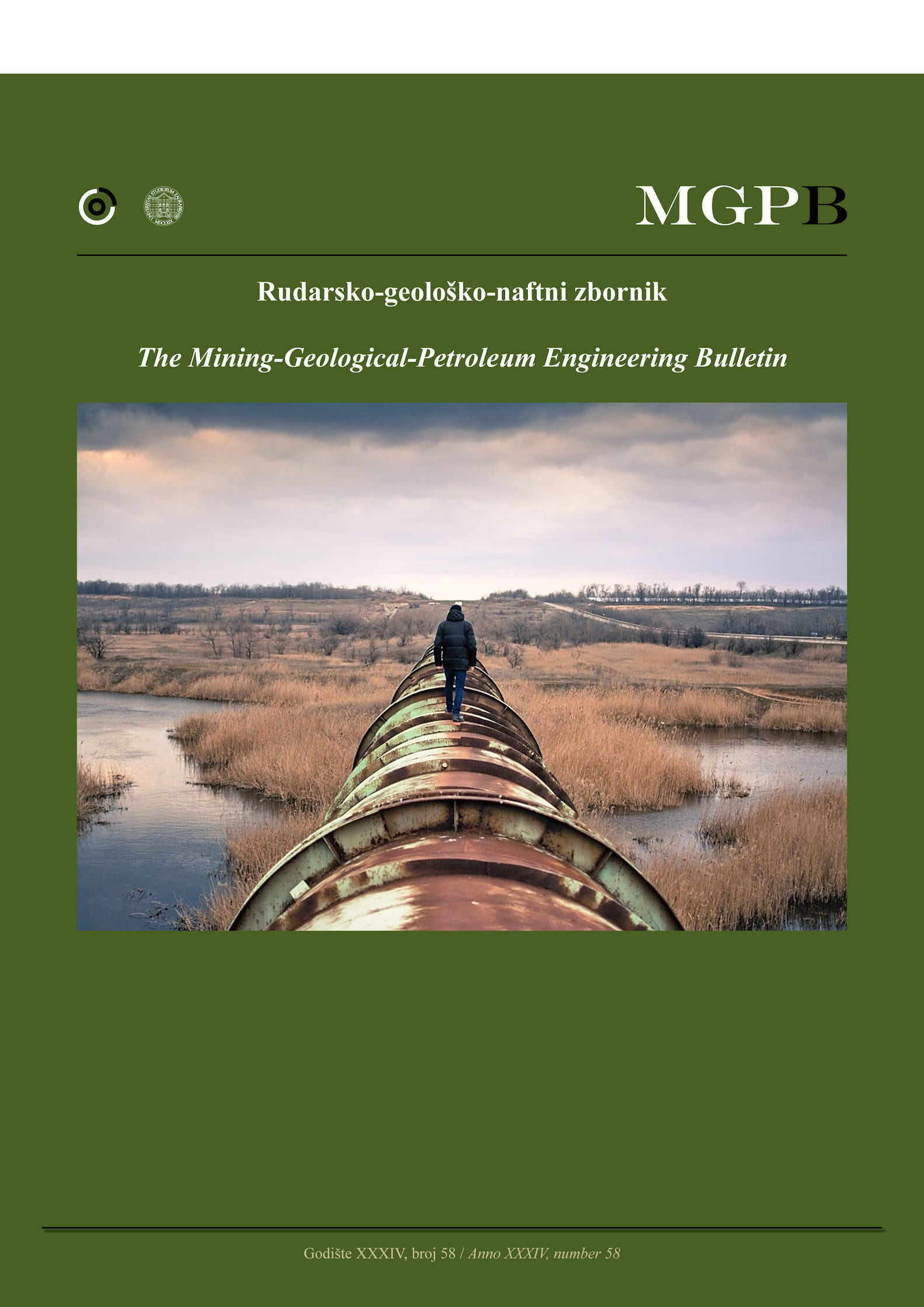Development of a 3D numerical model for simulating a blast wave propagation system considering the position of the blasting hole and in-situ discontinuities
DOI:
https://doi.org/10.17794/rgn.2022.2.6Keywords:
Blasting wave, 3D numerical analysis, jointed rock, distinct element methodAbstract
Blasting operations are one of the most important parts of geotechnical and mining projects. Most rocks naturally have a series of discontinuities that significantly affect their responses to blast waves. In this paper, the propagation of a blast wave in one intact rock and four rocks with different joint conditions are simulated by a 3-dimensional distinct element code. The results showed that the joint in the model acted as a wave barrier and passed part of the waves, absorbed a portion, and reflected the remaining part into the model. In other words, a discontinuity reduces the energy of the wave and causes more wave attenuation. In addition, a shorter distance between the joint and the hole causes slower wave propagation and greater damping. Moreover, the results showed that the smaller the angle between the discontinuity and axis of the blast holes, the more stress occurs in the rock bench.
Downloads
Published
How to Cite
Issue
Section
License
Copyright (c) 2021 authors and journal

This work is licensed under a Creative Commons Attribution 4.0 International License.
Creative Commons-BY
Authors who publish with this journal agree to the following terms:
In agreeing this form, you certify that:
- You read the ethical codex of the RGN zbornik available at journal web.
- You submitted work is your original work, and has not previously been published and does not include any form of plagiarism.
- You own copyright in the submitted work, and are therefore permitted to assign the licence to publish to RGN zbornik.
- Your submitted work contains no violation of any existing copyright or other third party right or any material of an obscene, libellous or otherwise unlawful nature.
- You have obtained permission for and acknowledged the source of any illustrations, diagrams or other material included in the work of which you are not the copyright owner.
- You have taken due care to ensure the accuracy of the work, and that, to the best of your knowledge, there are no false statements made within it.
- All co-authors of this submitted work are aware of, and in agreement with, the terms of this licence and that the submitted manuscript has been approved by these authors.
Publication licence
You retain copyright in your submitted work, according to journal license policy (CC-BY). By signing this form you agree that RGN zbornik may publish it under the publication licence. In summary the licence allows the following:
Anyone is free:
- To copy, distribute, display, and perform the work.
- To make derivative works.
Under the following conditions:
- The original author must always be given credit.
- The work may not be used for commercial purposes.
- If the work is altered, transformed, or built upon, the resulting work may only be distributed under a licence identical to this one.
Exceptions to the licence
In addition to publishing the work printed under the above licence, RGN zbornik will also enable the work to be visible online.
The journal editorial can change the licence rules anytime but it cannot retroactively restrict author(s) rights.


